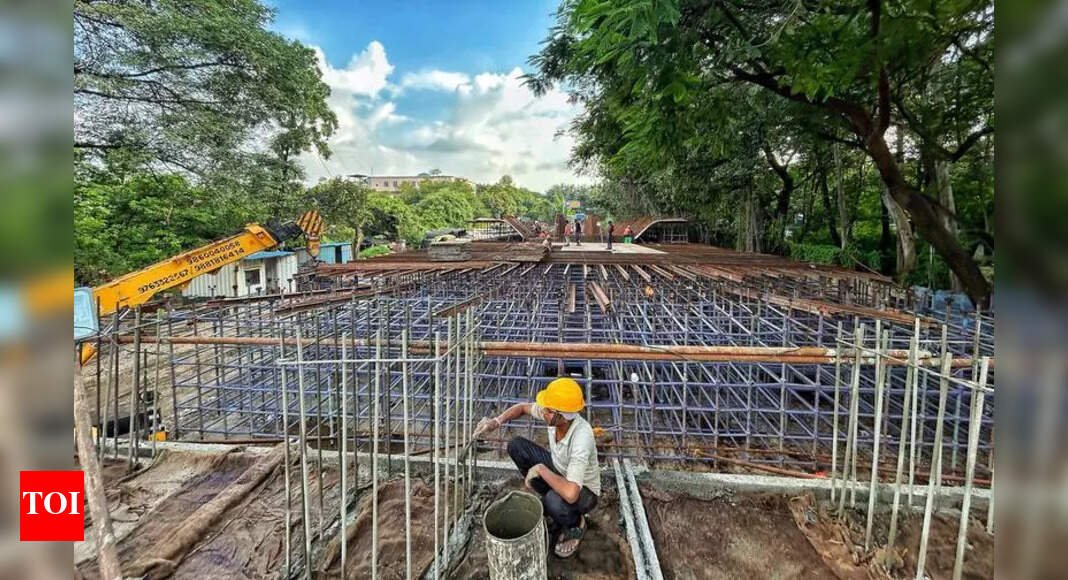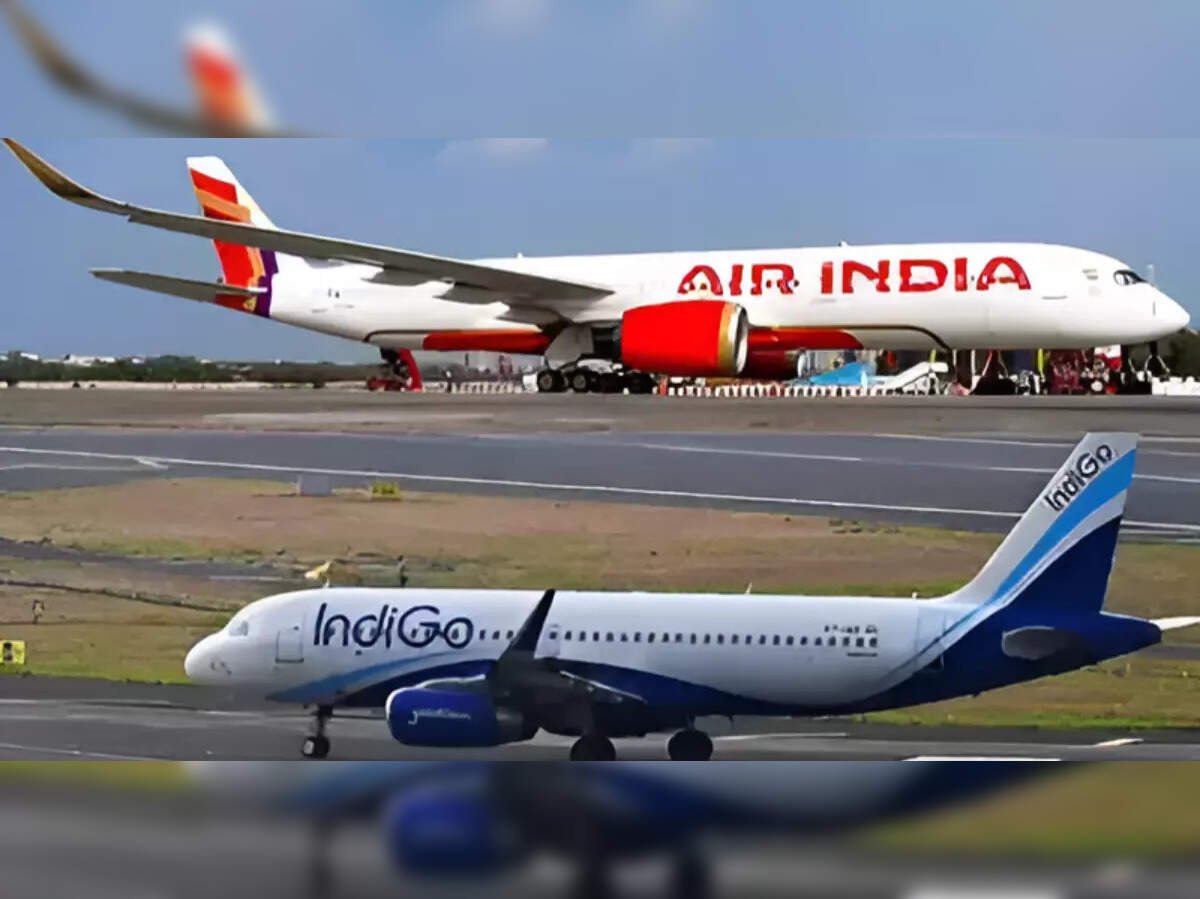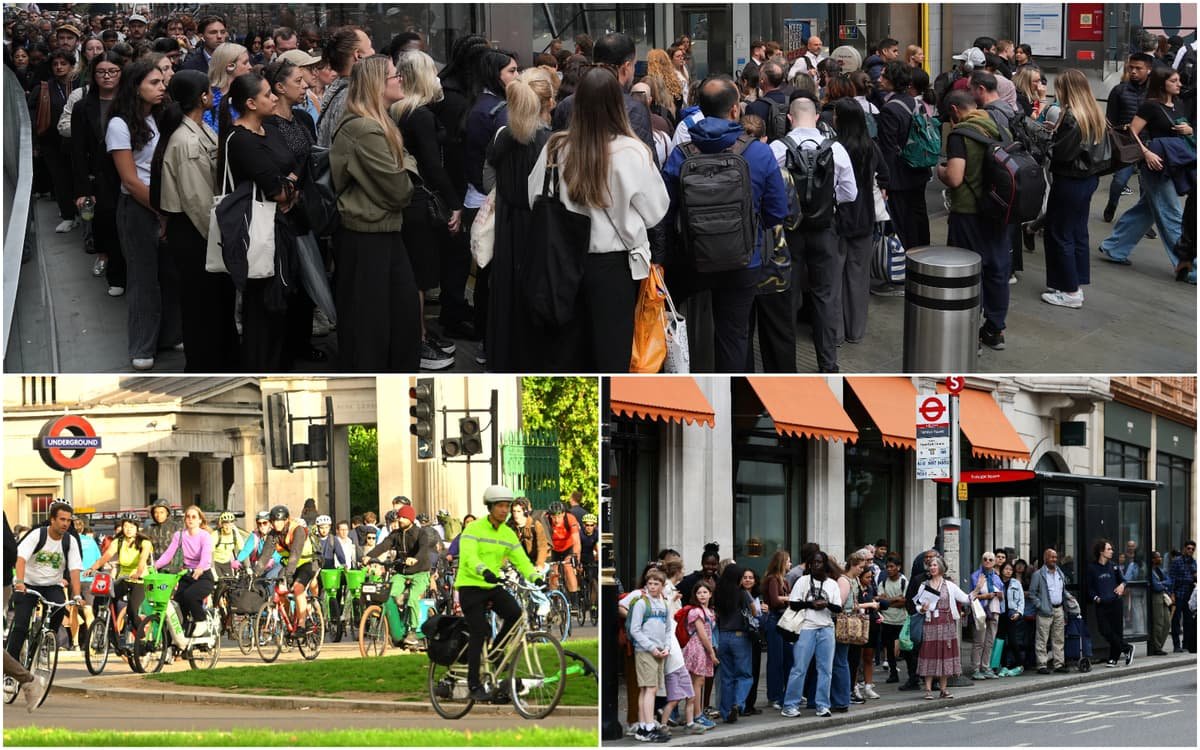Travel Guides & Articles
Coimbatore Emerges as the Next Big Tourism Destination in South India, Quietly Gaining Popularity

Saturday, August 2, 2025
Coimbatore, a city often overshadowed by the bustling metropolises of Bengaluru, Hyderabad, and Chennai, is quietly carving a name for itself on the tourism map. While these major cities in South India have long been recognized for their economic prowess and cultural significance, Coimbatore is emerging as a hidden gem, attracting attention not only from Indian travelers but also from international visitors. Known for its serene environment, thriving industrial sector, and proximity to popular hill stations like Ooty and the Nilgiris, Coimbatore is steadily becoming a must-visit destination.
In this article, we delve into the growing tourism potential of Coimbatore, examining the factors that make it a promising contender in India’s tourism landscape. From its blend of nature, culture, and modern amenities, to the efforts being made to improve infrastructure and connectivity, Coimbatore’s rise in popularity signals a bright future for tourism in the city.
Coimbatore’s Emerging Identity as a Tourist Hub
Coimbatore’s recent surge in tourism is not by accident. Historically recognized as an industrial hub—often dubbed the “Manchester of South India” due to its strong textile industry—the city is now beginning to showcase its appeal as a destination for both leisure and business tourism. For years, the city was largely seen as a stopover point for travelers en route to the more well-known hill stations of Ooty, Coonoor, and Nilgiri, but recent developments suggest that it is becoming a destination in its own right.
Coimbatore’s rise in the tourism sector can be attributed to several key factors: its strategic location, developing infrastructure, rich cultural heritage, and natural beauty. The city has long been known for its pleasant weather, clean surroundings, and proximity to the Western Ghats, which house some of the most stunning natural landscapes in the country. These features, combined with a growing focus on tourism infrastructure, are making Coimbatore an increasingly attractive destination.
The Blend of Urban and Natural Attractions
One of the unique aspects of Coimbatore’s tourism potential is the combination of both urban and natural attractions. Visitors can explore the city’s bustling markets, modern shopping centers, and educational institutions while also being close to the serene beauty of the Nilgiri hills and various natural reserves. This balance between modernity and nature makes Coimbatore a versatile destination, catering to a diverse set of interests.
1. Nature Tourism: The Gateway to the Western Ghats
Coimbatore’s proximity to the Western Ghats, a UNESCO World Heritage site, positions it as an ideal base for nature and adventure tourism. The city offers easy access to a range of outdoor activities such as trekking, wildlife safaris, and bird-watching. Popular destinations like the Ooty hill station, Coonoor, and the Nilgiri Mountain Railway, which is also a UNESCO World Heritage site, draw visitors from all over the world. Coimbatore itself is surrounded by lush green fields, pristine lakes, and scenic mountain ranges that provide a perfect backdrop for nature lovers and adventure seekers.
Additionally, Coimbatore is home to several wildlife sanctuaries and parks, such as the Indira Gandhi Wildlife Sanctuary and National Park. These parks are rich in biodiversity and offer opportunities for wildlife enthusiasts to see a variety of flora and fauna in their natural habitat.
2. Cultural Heritage and Temples
Coimbatore is also known for its rich cultural heritage, which is reflected in its temples, festivals, and local traditions. The city boasts several ancient temples, each with a unique story and architectural style. The Marudamalai Temple, dedicated to Lord Murugan, is one of the most popular spiritual destinations in Coimbatore. The temple, perched on a hill, offers not only a place of worship but also panoramic views of the surrounding landscape, adding a spiritual and aesthetic experience for visitors.
Other temples, such as the Perur Pateeswarar Temple, provide a glimpse into the region’s architectural marvels and cultural traditions. The city also celebrates festivals with much enthusiasm, particularly Tamil festivals like Pongal and Deepavali, which attract large numbers of tourists interested in experiencing local traditions and cultural events.
Improvements in Infrastructure and Connectivity
Coimbatore’s increasing prominence as a tourist destination has been accompanied by substantial improvements in its infrastructure. The city’s transportation network has been undergoing rapid modernization, making it easier for tourists to visit. Coimbatore International Airport has expanded its operations, with flights connecting it to major cities in India and abroad. This makes the city more accessible to international tourists, particularly those from Southeast Asia, the Middle East, and Europe.
The Indian Railways has also made significant improvements to the city’s railway station, making it a major transportation hub for the region. The upcoming Coimbatore-Bangalore expressway and the ongoing development of the national highway network are further enhancing connectivity between Coimbatore and neighboring states. These improvements have made the city an attractive starting point for tourists looking to explore nearby hill stations, wildlife sanctuaries, and cultural sites.
Additionally, the Coimbatore Municipal Corporation is working on enhancing the city’s cleanliness, infrastructure, and tourist amenities, making it more welcoming for both domestic and international tourists. As the city continues to invest in its tourism infrastructure, the number of visitors is likely to increase in the coming years.
Business Tourism: A Rising Trend
Coimbatore’s status as an industrial hub is another factor contributing to its rising popularity as a tourism destination. The city is home to numerous industries, including textiles, engineering, automotive, and manufacturing, which attract business travelers from across the globe. Business tourism is playing an important role in the city’s growth, as more conferences, trade exhibitions, and corporate events are being hosted in Coimbatore.
Coimbatore’s business tourism sector is bolstered by its wide range of high-quality hotels, modern conference facilities, and proximity to major business hubs in South India. The city’s favorable business climate, combined with its growing infrastructure, makes it an ideal location for both business meetings and leisure activities. Business travelers who visit Coimbatore for work often find themselves exploring the city’s attractions in their free time, further contributing to the city’s tourism boom.
The Impact on Local Economy
The rise of Coimbatore as a tourism hub is having a significant positive impact on the local economy. The tourism sector’s growth has spurred job creation in a variety of industries, including hospitality, transportation, retail, and local crafts. Hotels, restaurants, and local artisans have seen an increase in demand as tourism grows. The hospitality industry, in particular, has benefited from the rise in both leisure and business travel, with more establishments opening up to cater to the increasing number of visitors.
Additionally, the growing influx of tourists is helping to preserve and promote local culture, as more visitors become interested in experiencing the region’s rich traditions and crafts. As tourism continues to expand, local businesses will likely see further growth, creating a positive feedback loop that supports the broader economy.
Conclusion: The Future of Coimbatore’s Tourism
As Coimbatore continues to develop its tourism infrastructure, the city is poised to become a major player in India’s tourism sector. Its mix of urban convenience, cultural heritage, and proximity to natural wonders gives it a unique position among the growing tourism destinations in South India. While it may still be overshadowed by more well-known cities like Bengaluru and Chennai, Coimbatore’s appeal is steadily gaining recognition, especially among travelers looking for a blend of nature, culture, and modern amenities.
For Indian and international travelers, Coimbatore offers a refreshing alternative to the usual tourist spots. Its quiet rise as a tourism hub is not just a trend—it is a reflection of the city’s growing potential and its commitment to developing a sustainable, inclusive tourism industry. With improvements in infrastructure, a wealth of cultural attractions, and a stunning natural landscape, Coimbatore’s future as a top tourist destination looks very bright.
Travel Guides & Articles
Commuters will have to wait six months more to travel on new Sadhu Vaswani bridge | Pune News

Pune: The civic body has finished around 50% of construction work on the new Sadhu Vaswani bridge in the Koregaon Park area, prolonging the wait for the project’s completion to at least another six months. At present, it is unlikely that the bridge will be ready for commuters before March 2026. Regular travellers to locations like Koregaon Park, Wadia College Chowk, Bundgarden, and around Council Hall have been facing daily hardships owing to traffic diversions introduced to assist the bridge work since 2024. Commuters said the detours increase travel time significantly, and the project should be finished at the earliest. Local commuter Ashish Gaikwad said a deadline is important to wrap up the work in progress. “People are already suffering a lot because of traffic restrictions. We want the administration to conduct repeated inspections of the work to ensure that there are no unnecessary delays,” he suggested While Pune Municipal Corporation (PMC) initiated work on the new bridge last year, a large duration of time went in demolishing the old Sadhu Vaswani bridge. Civic officials claimed that the work is progressing at the expected pace now, and the target has been set to finish it either by March 2026 or a few days before that. Once ready, the bridge will expedite commuting in the area. Its four dedicated lanes for vehicles will double the capacity of the old bridge, which had two narrow lanes. The bridge will connect Koregaon Park to the VVIP Circuit House Road. At present, commuters go via the Mangaldas Road-Wadia College-Bundgarden Road stretch between these areas. A PMC official said, “The project is delicate and challenging as the bridge is coming up above rail tracks. Works are being carried out without disturbing rail operations. We are working in coordination with the railway administration.” Demolition of the old bridge above the railway tracks had also been conducted as a joint operation between civic and railway authorities. Now, PMC has once again approached Railways, seeking a go-ahead to lay a water pipeline crossing the rail tracks from below. Officials said this water supply line was laid above the tracks along the old bridge. It will not be possible with the new infrastructure, so a plan has been formulated to align it below the tracks. Tunnel work for the pipeline has already started.
Travel Guides & Articles
All lines suspended as Tube strike wipes out rush hour services- latest updates – London Evening Standard
Travel Guides & Articles
India arranges additional flights to help stranded passengers from Kathmandu amid Gen-Z protests in Nepal

“With the opening of the airport operation in Kathmandu, @MoCA_GoI, in coordination with Air India & IndiGo, has arranged additional flights this evening & over the next few days, alongside scheduled services resuming tomorrow. Airlines have been advised to keep their fares within reasonable levels,” Civil Aviation Minister Kinjarapu Rammohan Naidu posted on X.
Hundreds of Indians had been unable to return home as Tribhuvan International Airport suspended operations when youth-led demonstrations spilled into the streets of Kathmandu, disrupting public life and raising safety concerns. The swift mobilisation of flights is aimed at clearing the backlog while keeping fares in check.
Air India mounted special services to clear the backlog. “Air India is operating special flights today and tomorrow from Delhi to Kathmandu and back to help passengers who have been stranded due to the recent developments in Nepal. Our scheduled operations will also resume from tomorrow,” the airline said, adding it was working with government agencies to facilitate travel.
Nepal has been gripped by unprecedented youth-driven demonstrations over unemployment, political corruption and disenchantment with traditional parties. The unrest has paralysed daily life in Kathmandu, forced a temporary airport shutdown and heightened concerns in the region about instability in the Himalayan nation.
The Ministry of External Affairs (MEA) issued a stark advisory asking Indians to defer travel until stability returns. “Indian citizens presently in Nepal are advised to shelter in their current places of residence, avoid going out onto the streets and exercise all due caution. They are also advised to follow local safety advisories from Nepal authorities as well as the Embassy of India in Kathmandu,” the MEA said.
IndiGo confirmed it had resumed flights. “Flight operations to and from #Kathmandu have now resumed… We sincerely appreciate your patience and understanding and remain committed to ensuring safe and smooth journeys,” the airline said.
Authorities in Delhi are also monitoring ticket prices to ensure airlines do not exploit the crisis as Nepal’s protests show no signs of abating.
-

 Business2 weeks ago
Business2 weeks agoThe Guardian view on Trump and the Fed: independence is no substitute for accountability | Editorial
-
Tools & Platforms4 weeks ago
Building Trust in Military AI Starts with Opening the Black Box – War on the Rocks
-

 Ethics & Policy2 months ago
Ethics & Policy2 months agoSDAIA Supports Saudi Arabia’s Leadership in Shaping Global AI Ethics, Policy, and Research – وكالة الأنباء السعودية
-

 Events & Conferences4 months ago
Events & Conferences4 months agoJourney to 1000 models: Scaling Instagram’s recommendation system
-

 Jobs & Careers2 months ago
Jobs & Careers2 months agoMumbai-based Perplexity Alternative Has 60k+ Users Without Funding
-

 Education2 months ago
Education2 months agoVEX Robotics launches AI-powered classroom robotics system
-

 Podcasts & Talks2 months ago
Podcasts & Talks2 months agoHappy 4th of July! 🎆 Made with Veo 3 in Gemini
-

 Education2 months ago
Education2 months agoMacron says UK and France have duty to tackle illegal migration ‘with humanity, solidarity and firmness’ – UK politics live | Politics
-

 Funding & Business2 months ago
Funding & Business2 months agoKayak and Expedia race to build AI travel agents that turn social posts into itineraries
-

 Podcasts & Talks2 months ago
Podcasts & Talks2 months agoOpenAI 🤝 @teamganassi






















